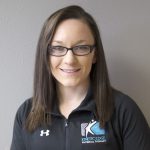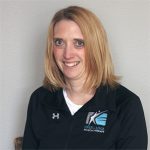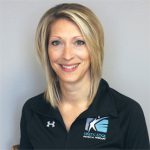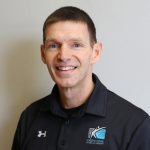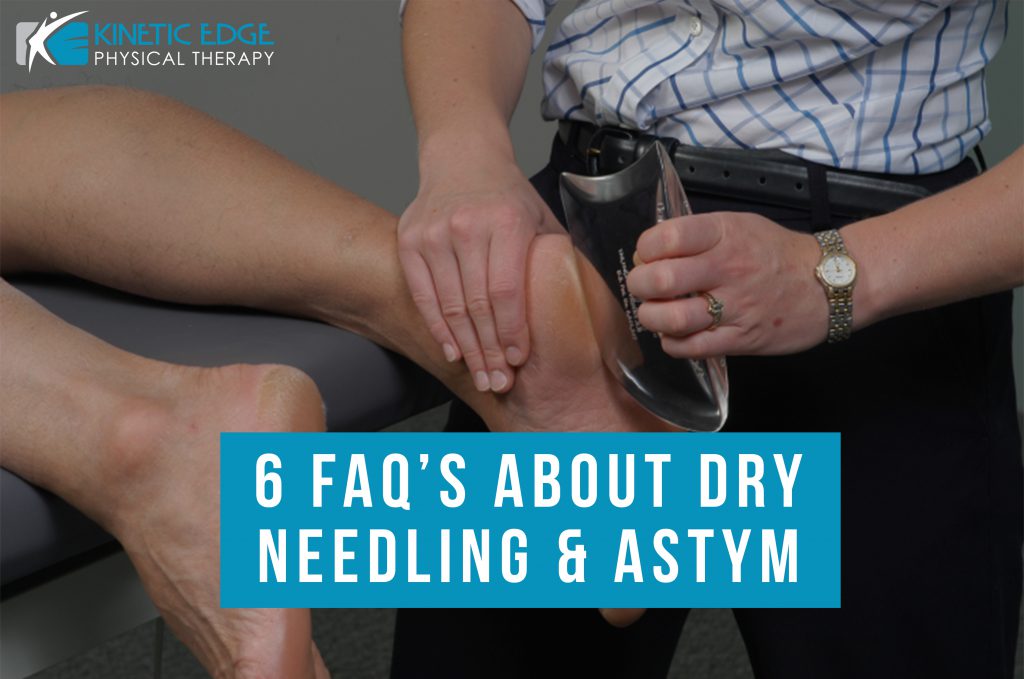If you feel like you’ve exhausted your resources for getting rid of your pain, dry needling and Astym therapy might be worth looking into. These two services are a part of our physical therapy services, and they can provide valuable relief for particularly stubborn pain alongside of a physical therapy plan of care.
Kinetic Edge Physical Therapy has licensed Astym and IASTM (instrument assisted soft tissue mobilization) providers in each of our clinics as well as certified dry needling providers in Ames, Des Moines, Newton, Oskaloosa and Pella. We decided to ask them some FAQ’s to give you a better understanding if one might benefit you!
Astym FAQ’s
- What is Astym?
Astym is an instrument assisted soft tissue treatment. The focus of the treatment is to resorb scar tissue and help regenerate healthy tissue in the body. – Matt Scotton, PT, DPT, ATC, LAT, CSCS
- What sorts of problems benefit from Astym?
Astym can be used for a variety of conditions. Anything from acute ankle sprains to chronic tendon issues will benefit from the treatment. I have a patient with chronic soft tissue tightness from a traumatic injury that receives benefit from Astym to help manage her knee and low back symptoms. Astym can also be helpful with tendonitis in the elbow, knee, and achilles. – Todd Schemper, PT, DPT, OCS
- Why should I try Astym?
Those with persistent pain from an injury that is not going away on its own may be a good candidate for Astym. I recently had a patient dealing with calf pain for several months. After 4-5 treatment of Astym the calf pain is almost gone. – Todd Schemper, PT, DPT, OCS
In my experience it works well to speed recovery and improve mobility quickly is tissues that have been swollen and painful for longer than 2 weeks. – Matt Scotton, PT, DPT, ATC, LAT, CSCS
- What is an Astym treatment like?
Astym therapy includes treatment by a physical therapist using the Astym instruments or tools, to glide over the body area and surrounding areas that are affected. Coco butter is one medium used to help smoothly work the tissues. After the treatment, hands on soft tissue mobilization is used to further treat the tissues. Key components after Astym include regular stretching, proper hydration, and icing. – Carol Kelderman, PT, DPT
- Will my insurance pay for Astym treatment?
Astym is manual therapy, which is a covered service by insurance during physical therapy. If you’re unsure of what benefits you will have for therapy treatment, you can always call us for a complimentary benefits check. – Joel Watters, PT, DPT
- Does Astym hurt?
There can be some discomfort during Astym, but most people find that successive treatments feel better than the first. I also find that patients commonly feel relief immediately after the treatment when they move around and compare to how they felt when they came in from the treatment. – Todd Schemper, PT, DPT, OCS
Most people tolerate it well and are happy to get rid of the pain and dysfunction that brought them to the clinic. – Carol Kelderman, PT, DPT
Dry Needling FAQ’s
- What is dry needling?
Dry needling is inserting a monofilament, very fine, needle into a tight band of muscle or trigger point to elicit a twitch response which then is followed by muscle relaxation. The muscle twitch resets the muscle to allow it to function normally again. – Melissa Hansen, PT, DPT
- What conditions benefit from dry needling?
Anyone with tightness in their muscles, chronic trigger points, or chronicle muscle pain can benefit from dry needling. I’ve seen great success for people with long term muscle pain. Clients that have tried conventional treatments like massage, physical therapy, and chiropractic care and have not had relief of symptoms are also good candidates. – Tim Vander Wilt, PT, ATC
- Why should I try dry needling?
We have seen some amazing results with treatments. This treatment relieves muscle pain and allows us to facilitate rehabilitation so you can return to normal daily activities. – Tim Vander Wilt, PT, ATC
- What is dry needling treatment like?
The majority of the people we treat say the worst part is getting the twitch response of the muscle. You feel a little pinch and a quick twitch that often is a quick release of the muscle. – Melissa Hansen, PT, DPT
- Will my insurance pay for dry needling treatment?
Insurance does not pay for dry needling in most cases. However, it’s fairly inexpensive, and the benefits far outweigh the cost. – Tim Vander Wilt, PT, ATC
- Does dry needling hurt?
Dry needling can be uncomfortable, but not in what you would typically think of with the word, “needle.” Most people don’t feel the piercing of the skin due to how fine the needle is. What you will feel is what is called the “twitch response” from the trigger point. This feels similar to a cramp or deep throb, but only lasts for a few seconds. You may feel some soreness in the area that was treated, similar to the soreness you feel after a good workout. – Melissa Hansen, PT, DPT
If you’d like to figure out if dry needling or Astym are the right fit for you, contact the experts at Kinetic Edge Physical Therapy. Just contact us online or call 866-588-0230 to ask for our complimentary 20-minute screen with one of our certified providers, and we can help you understand if Astym or dry needling is right for you.
